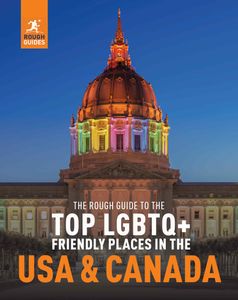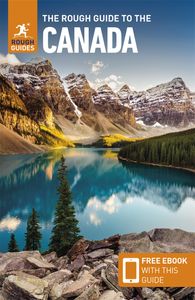Inuvik
INUVIK (“the place of man”) is the farthest north you can drive on a public highway in North America – unless you wait for the winter freeze and follow the ice road carved across the Mackenzie River and the Arctic Ocean to the north. Canada’s first planned town north of the Arctic Circle, Inuvik is a battered spot begun in 1954 as an administrative centre to replace Aklavik, a settlement to the west wrongly thought to be doomed to envelopment by the Mackenzie River’s swirling waters and shifting mud flats. Inuvik is an interesting melting pot of around 3500 people, with Dene, Métis and Inuvialuit living alongside the trappers, pilots, scientists and frontier entrepreneurs drawn here in the 1970s when a boom followed the oil exploration in the delta. Today, the local economy also relies on government jobs, services, tourism and the town’s role as a supply and communication centre for much of the western Arctic. For 56 days from late June, Inuvik basks in round-the-clock sunshine – it’s well worth timing your trip to coincide with the mid-July Great Northern Arts Festival (wgnaf.org), ten fabulous days of exhibitions and performances by local and international artists.
Wandering the town provides an eye-opening introduction to the vagaries of northern life, from the strange stilted buildings designed to prevent their heat melting the permafrost (which would have disastrous effects on the piles or gravel pads that serve as foundations), to the street-level “utilidors”, which carry water and sewage lines – again, to prevent the permafrost melting.
The influence of Inuvialuit people in local political and economic life has increased, to the extent that the Western Claims Settlement Act of 1984 saw the government cede titles to various lands in the area, returning control that had been lost to the fur trade, the Church, oil companies and national government.
Tours from Inuvik
Most visitors to Inuvik take a tour of some description, and despite the remoteness of the NWT and the isolated nature of its communities, it is remarkably simple – if occasionally rather expensive – to find tour operators who offer a wide range of cultural, natural history and other trips. A full list of licensed operators can be found in the Explorers’ Guide to Canada’s Northwest Territories or by visiting w spectacularnwt.com; further information is on t 1 800 661 0788 or t 1 867 873 7200. Download a free copy of the Inuvik Attraction and Service Guide, (w inuvik.ca) which provides a list of accommodations, tour operators, attractions and information on the surrounding communities – also available at most tourist centres in NWT and Yukon.
Day-trips from Inuvik include tours to the tundra, a traditional bush camp, boat tours on the Mackenzie River, beluga whale-watching, flights over the Mackenzie Delta and trips to the fly-in communities. Arctic Nature Tours and Up North Tours are the main operators and have a special bias towards wildlife. Trips include tours to the Babbage River (which, if the timing is right, offers a bird’s-eye view of the Porcupine caribou herd) and bird and wildlife visits to Hershel Island, a Yukon territorial park in the Beaufort Sea that is still a prime hunting and fishing ground for the Inuvialuit (western Arctic Inuit). The companies also offer guided trips to Tuktoyaktuk and can arrange tours with guides based in Aklavik and Paulatuk.
Tour operators
Arctic Adventure Tourst 867 777 3535, t 1 800 685 9417, w whitehuskies.com. Accommodation, tours of the Dempster and flight tours to Tuk, ice road excursions and dog-sledding. Also rents boats and vehicles.
Midnight Expresst 867 777 3690. Offers boat trips on the Mackenzie River.
Tundra North Tourst 867 678 0510, t 800 420 9652, wtundranorthtours.ca. Tours of Dempster Hwy, flight tours, cultural boat tours and winter excursions on snowmobile and ATV.

















